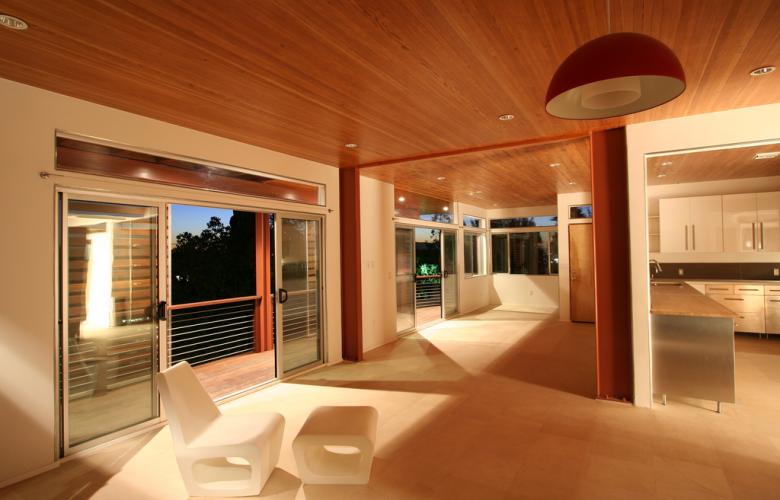For anyone who aspires to save money, save the earth or be more comfortable in their home, a passive house might just be the best way to do that.
These buildings, which are not restricted to residential properties, are characterised by low energy consumption and high levels of comfort. This makes them especially appealing in Japan, a country where it is nigh impossible to achieve either of those in the extreme conditions of summer and winter.
What is a passive house?
Simply put, it's an (entirely voluntary) building standard that emphasises energy efficiency, comfort and affordability. While the promotion of this standard is largely driven by the Passive House Institute in Germany, passive houses are popping up — in various shapes, sizes and specifications — all over the world, including Japan.
Kevin Meyerson, a long-term resident who lives in a certified passive house in Karuizawa, Nagano, defines it as "the most stringent building energy efficiency standard in the world." He says that passive houses provide extremely comfortable environments at about one-tenth the energy consumption of normal buildings.
Passive houses utilise the sun, internal heat sources (including people and pets) and heat recovery systems to keep the building nice and toasty even in icy weather. Meyerson confirms that the coldest his two-storey house has ever been was 14 degrees Celsius — and that was when it was around -15 outside.
While Meyerson has floor heating, he runs it perhaps four times a year ("basically just to make sure it's working,") and burns a bundle of logs in his wood stove every two to three days in winter. That's the extent of the house's artificial heat sources — and a very different reality to the conventional buildings his neighbours inhabit.
Passive houses do more than merely tap into natural heat; they leverage top-notch insulation, airtight construction, special windows, orientation and design to ensure optimal efficiency. "Your building becomes a thermos," explains Meyerson.
Even in summer, though, it's not at all uncomfortable. Carefully planned ventilation systems ensure a constant supply of fresh air, and excess heat is kept out. Shading is used strategically. And yes, you can open the windows any time you like. "It's a common misconception that you can't," says Meyerson. "It's a house, not a dictatorship."
Beyond comfort: Buildings that don't cost the earth
The advantages of passive houses extend much further than avoiding heat stress. In line with Meyerson's comments on energy consumption, these buildings allow savings of up to 90 percent on utility bills. Passive houses are designed to use a maximum of 120 kilowatt-hours of primary energy per square metre of flooring per year, with a bit of leeway for heating and cooling loads.
Because passive houses need to be built according to strict standards, they do cost an estimated 10-20 percent more to construct than conventional buildings. The long-term savings on monthly energy bills more than make up for the initial outlay though, and, as Meyerson points out, "the cost difference shrinks as architects and builders make more of them."
For extra efficiency and environmental points, solar panels can be added to a passive house; while it's not a requirement, it's a way to progress from passive consumption to active generation of energy. Meyerson's house, for example, is a "positive energy building" that produces more energy than it uses.
Passive houses, with or without these add-ons, make good sense in Japan (and elsewhere) in the context of the global climate crisis and pressing need for practical solutions. They offer an affordable way to gain at least partial energy independence, reducing a building's demand on gas, oil and electricity and its carbon footprint along with it.
Japan ranks poorly among the developed nations in energy efficiency; the bulk of its energy seems to go to buildings — passive houses are one way to start changing this.
Building a passive house in Japan
It's no surprise that the number of passive houses is rising in Japan — even if they don't receive the same subsidies provided for the installation of green technologies (solar and so on) that are more profitable for industry players.
When Meyerson built his passive house in 2012, it was the first in Nagano Prefecture and the sixth certified in the country. Until recently, the Karuizawa Passive House held the title of the most energy-efficient house in Japan; even more efficient houses have since sprung up, but Meyerson's abode continues to rank among the top few.
As interest in sustainable building grows, more and more passive houses are being commissioned and it's becoming easier and easier (and cheaper) to have them built. In Japan, hundreds of architects have been trained through an organisation called Passive House Japan, enabling them to ensure that a building is designed and constructed in compliance with the standards promoted by the Passive House Institute in Germany.
By Carey Finn
Similar to this:
Japanese traditions for sustainable buildings
MUJI releases new tiny home design
SUMA Architects design Japanese home and community kitchen on mountaintop





